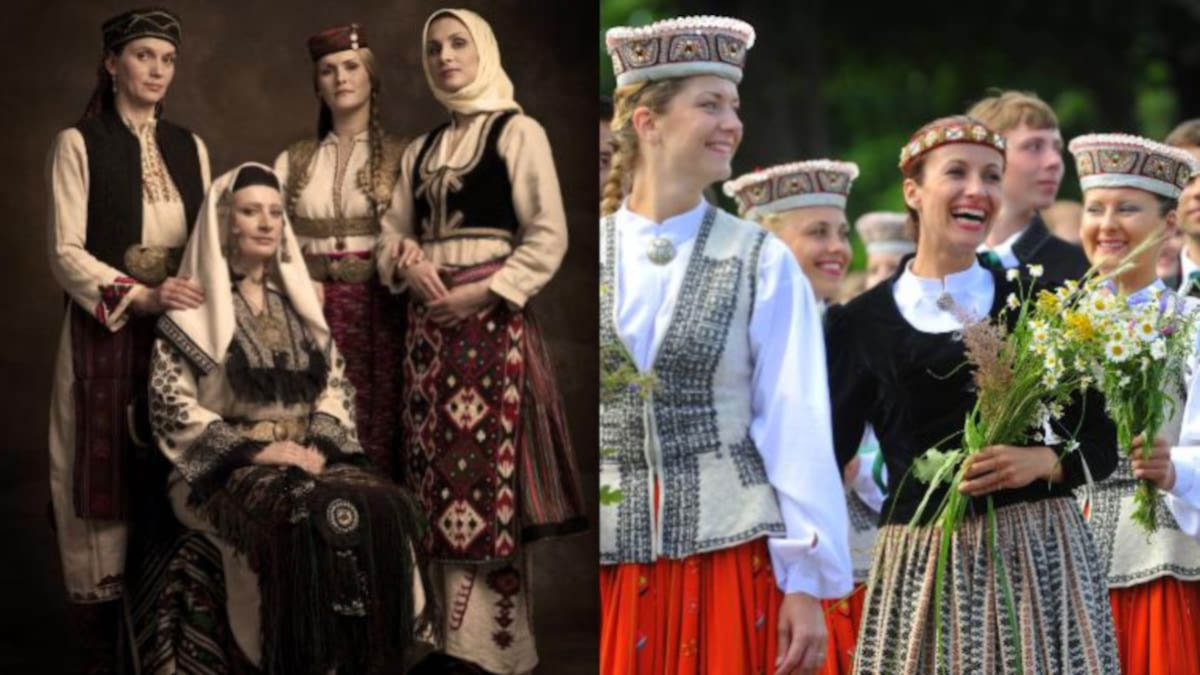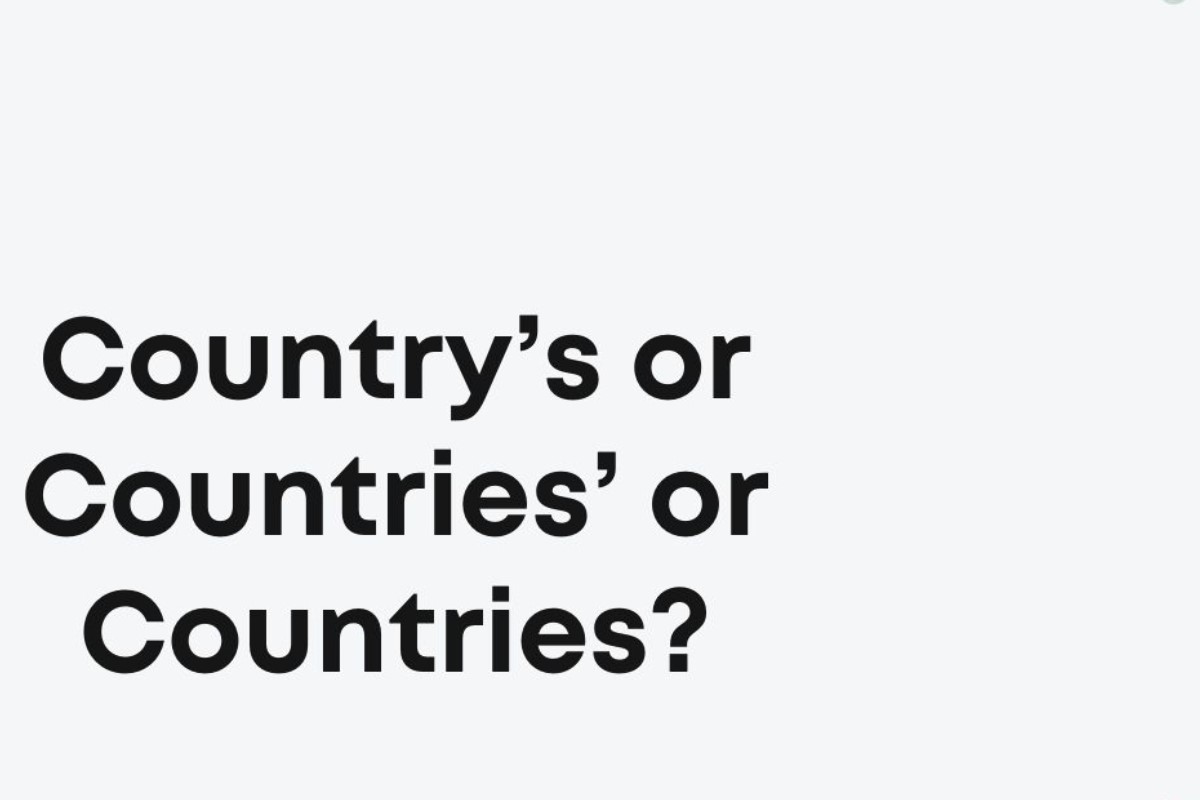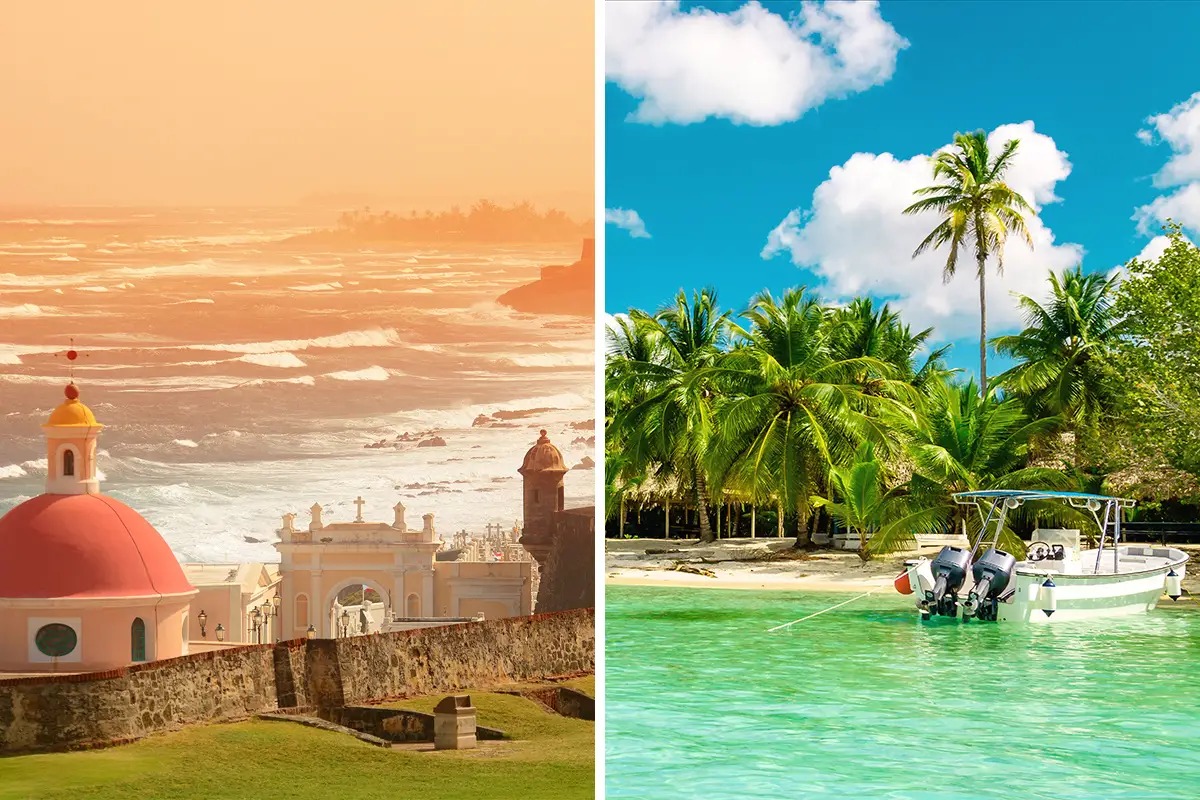Home>World News>The Surprising Contrasts Between Baltic And Balkan Countries


World News
The Surprising Contrasts Between Baltic And Balkan Countries
Published: January 19, 2024
Discover the intriguing differences and similarities between Baltic and Balkan countries in this comprehensive world news analysis. Explore the unique cultural, historical, and geopolitical contrasts.
(Many of the links in this article redirect to a specific reviewed product. Your purchase of these products through affiliate links helps to generate commission for Noodls.com, at no extra cost. Learn more)
Table of Contents
Introduction
When it comes to global dynamics, the contrasts between Baltic and Balkan countries are both intriguing and significant. These two regions, despite their proximity in Europe, boast distinct historical, cultural, and economic characteristics that set them apart. Exploring the unique features of these nations offers a fascinating glimpse into the diversity and complexity of the European continent.
The Baltic countries, including Estonia, Latvia, and Lithuania, are nestled in the northeastern part of Europe, bordering the Baltic Sea. In contrast, the Balkan countries, such as Albania, Bosnia and Herzegovina, Croatia, and others, are located in the southeastern part of Europe, with a rich historical tapestry shaped by various influences over the centuries.
As we delve into the surprising contrasts between these regions, it becomes evident that their geographical locations have played a pivotal role in shaping their destinies. The Baltic states, with their northern positioning, have experienced influences from Nordic cultures, while the Balkan countries, situated at the crossroads of East and West, have been influenced by a diverse array of civilizations, including the Byzantine, Ottoman, and Austro-Hungarian empires.
These distinct geographical and historical factors have contributed to the development of unique cultural identities in each region. The Baltic countries, with their strong Nordic and Baltic influences, showcase a blend of traditions, languages, and customs that reflect their historical ties with neighboring nations. On the other hand, the Balkan countries exhibit a rich tapestry of cultural diversity, stemming from the interplay of Slavic, Mediterranean, and Ottoman influences.
Furthermore, the economic contrasts between the Baltic and Balkan countries are striking. The Baltic states have experienced rapid economic growth and integration with the European Union, fostering a reputation for innovation and technological advancement. In contrast, the Balkan countries have grappled with economic challenges, including post-conflict transitions and varying degrees of development, leading to a diverse economic landscape within the region.
As we navigate the political dynamics of these regions, we uncover a myriad of contrasts in governance, geopolitical alignments, and regional partnerships. The Baltic countries have forged strong ties with Western institutions and have become key players in regional security and cooperation initiatives. Meanwhile, the Balkan countries have navigated complex geopolitical dynamics, striving for stability and integration within the European framework while addressing historical legacies and regional complexities.
In essence, the surprising contrasts between Baltic and Balkan countries offer a compelling narrative of historical legacies, cultural diversity, economic trajectories, and political dynamics. By delving into the nuances of these regions, we gain a deeper understanding of the multifaceted tapestry of Europe and the rich complexities that define its diverse nations.
Geographical Location
The geographical locations of the Baltic and Balkan countries play a pivotal role in shaping their identities and interactions with neighboring regions. The Baltic countries, comprising Estonia, Latvia, and Lithuania, are situated in the northeastern part of Europe, bordering the Baltic Sea to the west and sharing land borders with Russia to the east and Belarus to the southeast. This strategic positioning has historically influenced the cultural, economic, and political dynamics of the Baltic states.
In contrast, the Balkan countries, including Albania, Bosnia and Herzegovina, Croatia, and others, are nestled in the southeastern part of Europe, encompassing a diverse landscape that stretches from the Adriatic Sea to the Black Sea. The Balkans serve as a bridge between the European continent and the Near East, with a complex topography characterized by mountain ranges, rivers, and coastal plains.
The geographical distinctions between the Baltic and Balkan regions have contributed to their unique historical trajectories. The Baltic countries, with their proximity to the Nordic and Scandinavian regions, have experienced influences from Viking settlements and medieval trade routes, shaping their cultural and linguistic heritage. Additionally, the Baltic Sea has served as a vital conduit for maritime commerce and strategic engagements, fostering connections with neighboring countries and maritime powers.
On the other hand, the Balkan countries' geographical location at the crossroads of Europe and Asia has led to a rich tapestry of influences from various civilizations. The mountainous terrain of the Balkans has historically provided natural fortifications and cultural diversity, contributing to the region's complex historical narrative. Moreover, the Adriatic and Aegean coastlines have facilitated trade, cultural exchanges, and the diffusion of ideas, reflecting the Balkans' position as a meeting point of diverse cultures and civilizations.
The geographical diversity within the Baltic and Balkan regions has also influenced their environmental landscapes, from the lush forests and coastal plains of the Baltic countries to the rugged mountains and Mediterranean climates of the Balkans. These environmental factors have not only shaped the livelihoods and traditions of the local populations but have also influenced economic activities, agricultural practices, and natural resource utilization within each region.
In essence, the geographical locations of the Baltic and Balkan countries serve as foundational elements in understanding the historical, cultural, and environmental dimensions that define these regions. By examining the unique geographical characteristics of each area, we gain insight into the multifaceted tapestry of Europe and the diverse influences that have shaped the identities of the Baltic and Balkan nations.
Historical Background
The historical backgrounds of the Baltic and Balkan countries are rich and complex, shaped by a tapestry of influences that have left indelible imprints on their cultural, political, and social landscapes. The Baltic countries, comprising Estonia, Latvia, and Lithuania, boast a legacy that encompasses medieval trade routes, the Hanseatic League, and the enduring struggle for independence. These nations have been at the crossroads of Nordic, Germanic, and Slavic influences, leading to a unique blend of traditions and historical narratives.
Estonia, with its ancient roots in the Baltic-Finnic tribes, has witnessed a history marked by Danish, Swedish, and Russian rule, each leaving its mark on the country's cultural heritage. Similarly, Latvia's historical journey has been shaped by the Teutonic Order, the Livonian Confederation, and periods of foreign domination, culminating in the restoration of its independence in the 20th century. Lithuania, known for its grand duchies and the Union of Lublin, has navigated a complex historical narrative, including the Grand Duchy of Lithuania's pivotal role in the medieval era and the subsequent union with Poland.
In contrast, the Balkan countries have been characterized by a diverse array of historical legacies, encompassing the Byzantine Empire, the Ottoman conquests, and the intricate interplay of Eastern and Western influences. Albania, with its ancient Illyrian roots, has experienced a complex historical evolution, from Roman occupation to Ottoman rule, shaping its cultural identity and national consciousness. Bosnia and Herzegovina, situated at the crossroads of the Ottoman and Austro-Hungarian empires, reflects a rich tapestry of religious and cultural diversity, underscored by its historical significance as a meeting point of civilizations.
The historical backgrounds of the Baltic and Balkan countries intertwine with the broader narrative of European history, reflecting the complexities of medieval trade, religious schisms, and geopolitical rivalries. The Baltic states' struggle for independence from Soviet domination and their subsequent integration into the European framework mirror the region's resilience and determination to carve its path in the contemporary era. Similarly, the Balkan countries' journey toward stability, reconciliation, and European integration underscores the region's ongoing quest for unity and prosperity.
In essence, the historical backgrounds of the Baltic and Balkan countries offer a captivating mosaic of triumphs, challenges, and resilience, shaping the identities of these nations and contributing to the rich tapestry of European history.
Cultural Differences
The cultural differences between the Baltic and Balkan countries are as diverse and intricate as the regions themselves. The Baltic countries, encompassing Estonia, Latvia, and Lithuania, showcase a unique blend of traditions, languages, and customs that reflect their historical ties with neighboring nations. Influenced by Nordic, Germanic, and Slavic cultures, the Baltic states have cultivated a rich cultural tapestry characterized by folklore, music, and culinary traditions that resonate with their historical legacies.
Estonia, with its Baltic-Finnic roots, has preserved its distinct linguistic heritage, with the Estonian language serving as a cornerstone of its national identity. The country's cultural landscape is adorned with vibrant folk traditions, including traditional song festivals and intricate handicrafts that celebrate its rich heritage. Similarly, Latvia's cultural mosaic is shaped by its vibrant folk music, colorful festivals, and the enduring legacy of its ancient pagan traditions, adding depth to the nation's cultural identity. Lithuania, known for its enduring traditions of folk music, intricate wood carvings, and the colorful festival of Užgavėnės, reflects a cultural heritage that intertwines pagan customs with Christian influences, creating a captivating blend of traditions.
In contrast, the Balkan countries, including Albania, Bosnia and Herzegovina, and Croatia, exhibit a rich tapestry of cultural diversity, stemming from the interplay of Slavic, Mediterranean, and Ottoman influences. Albania's cultural heritage is steeped in ancient Illyrian traditions, reflected in its vibrant music, traditional dances, and the enduring legacy of its unique polyphonic singing, recognized as a UNESCO Intangible Cultural Heritage. Bosnia and Herzegovina, with its diverse religious and cultural landscape, embodies a fusion of Ottoman, Austro-Hungarian, and Slavic influences, manifested in its vibrant folk dances, traditional crafts, and culinary delights. Croatia, renowned for its rich maritime heritage, diverse regional customs, and the colorful traditions of the Dalmatian coast, showcases a cultural mosaic shaped by its historical interactions with Mediterranean and Central European civilizations.
The cultural differences between the Baltic and Balkan countries offer a captivating glimpse into the diverse tapestry of European traditions, languages, and customs. These distinctions, rooted in centuries of historical evolution, contribute to the rich and multifaceted identities of the Baltic and Balkan nations, underscoring the enduring legacies that define their cultural landscapes.
Economic Contrasts
The economic contrasts between the Baltic and Balkan countries are striking, reflecting divergent trajectories influenced by historical legacies, geopolitical dynamics, and regional integration. The Baltic states, comprising Estonia, Latvia, and Lithuania, have emerged as beacons of economic resilience and innovation, undergoing rapid transformations since their independence from Soviet rule. These nations have embraced market-oriented reforms, fostered technological advancements, and integrated into the European Union, propelling their economies toward sustained growth and development.
Estonia, often hailed as a digital pioneer, has leveraged technological innovation to drive economic progress, earning the moniker of "e-Estonia" for its advanced e-governance systems, digital infrastructure, and thriving startup ecosystem. The country's commitment to digitalization has not only streamlined bureaucratic processes but has also positioned Estonia as a hub for technological entrepreneurship and investment, contributing to its economic dynamism.
Similarly, Latvia and Lithuania have embraced economic reforms, diversified their industries, and capitalized on their strategic geographical positioning to foster trade and investment opportunities. The Baltic states' integration into the European single market has facilitated access to broader economic opportunities, bolstered foreign direct investment, and enhanced their competitiveness on the global stage.
In contrast, the Balkan countries have navigated a more complex economic landscape, characterized by varying degrees of development, post-conflict transitions, and the challenges of integration within the European framework. While countries like Croatia have made significant strides in economic reforms and EU accession, others, such as Albania and Bosnia and Herzegovina, have faced hurdles in addressing structural deficiencies and fostering sustainable growth.
The economic contrasts within the Balkan region reflect a tapestry of challenges and opportunities, shaped by historical legacies, geopolitical complexities, and the imperative of fostering inclusive and sustainable development. The Balkan countries' pathways toward economic convergence and integration with the European Union underscore the region's resilience and determination to overcome historical challenges and chart a course toward prosperity.
In essence, the economic contrasts between the Baltic and Balkan countries offer a nuanced narrative of divergent trajectories, economic resilience, and the pursuit of sustainable development, underscoring the multifaceted dimensions of Europe's economic landscape.
Political Dynamics
The political dynamics within the Baltic and Balkan regions are shaped by a complex interplay of historical legacies, geopolitical alignments, and aspirations for regional stability and integration. The Baltic countries, comprising Estonia, Latvia, and Lithuania, have emerged as key players in regional security cooperation and have forged strong ties with Western institutions, including NATO and the European Union. These nations have actively contributed to transatlantic security initiatives and have demonstrated a steadfast commitment to collective defense and regional stability.
Estonia, in particular, has been a vocal advocate for NATO's enhanced presence in the Baltic region, underscoring the strategic significance of deterring potential security threats and safeguarding the sovereignty of Baltic states. The country's proactive engagement in cybersecurity initiatives and its support for transatlantic partnerships reflect its commitment to fostering a secure and resilient regional environment.
Similarly, Latvia and Lithuania have actively participated in NATO missions and have upheld their commitments to collective defense, contributing to the alliance's deterrence and defense posture in the Baltic region. The Baltic countries' political dynamics are underpinned by a shared commitment to Euro-Atlantic integration, democratic governance, and the preservation of regional security in the face of evolving geopolitical challenges.
In contrast, the Balkan countries have navigated a complex geopolitical landscape, striving for stability, reconciliation, and integration within the European framework. Croatia, having acceded to the European Union, has played a pivotal role in advocating for the European aspirations of its neighboring Balkan states, emphasizing the imperative of fostering regional cooperation, addressing historical legacies, and advancing the principles of democracy and the rule of law.
Albania and North Macedonia's recent progress toward EU accession reflects the region's commitment to political reforms, regional cooperation, and the consolidation of democratic institutions. These developments underscore the evolving political dynamics within the Balkans, as countries endeavor to overcome historical challenges and foster closer ties with the European Union, contributing to the region's long-term stability and prosperity.
The political dynamics within the Baltic and Balkan regions offer a compelling narrative of regional cooperation, security partnerships, and the aspirations for Euro-Atlantic integration. These dynamics underscore the diverse geopolitical trajectories and the collective efforts of Baltic and Balkan nations to navigate complex historical legacies and chart a course toward a more secure and prosperous future.
Conclusion
In conclusion, the contrasts between the Baltic and Balkan countries offer a captivating narrative of diversity, resilience, and historical legacies that have shaped the identities and trajectories of these regions. From their distinct geographical locations to their rich historical backgrounds, cultural tapestries, economic trajectories, and political dynamics, the Baltic and Balkan countries exemplify the multifaceted complexities of Europe's diverse landscape.
The geographical positioning of the Baltic and Balkan countries has played a pivotal role in shaping their historical narratives, cultural identities, and interactions with neighboring regions. The Baltic states, nestled in the northeastern part of Europe, have experienced influences from Nordic, Germanic, and Slavic cultures, reflecting their historical ties with neighboring nations and maritime powers. In contrast, the Balkan countries, situated at the crossroads of East and West, have been influenced by a diverse array of civilizations, including the Byzantine, Ottoman, and Austro-Hungarian empires, shaping their cultural diversity and historical evolution.
The historical backgrounds of the Baltic and Balkan countries intertwine with the broader narrative of European history, reflecting the complexities of medieval trade, religious schisms, and geopolitical rivalries. The Baltic states' struggle for independence from Soviet domination and their subsequent integration into the European framework mirror the region's resilience and determination to carve its path in the contemporary era. Similarly, the Balkan countries' journey toward stability, reconciliation, and European integration underscores the region's ongoing quest for unity and prosperity.
The cultural differences between the Baltic and Balkan countries offer a captivating glimpse into the diverse tapestry of European traditions, languages, and customs. These distinctions, rooted in centuries of historical evolution, contribute to the rich and multifaceted identities of the Baltic and Balkan nations, underscoring the enduring legacies that define their cultural landscapes.
The economic contrasts between the Baltic and Balkan countries reflect divergent trajectories influenced by historical legacies, geopolitical dynamics, and regional integration. The Baltic states have emerged as beacons of economic resilience and innovation, undergoing rapid transformations since their independence from Soviet rule, while the Balkan countries have navigated a more complex economic landscape, characterized by varying degrees of development, post-conflict transitions, and the challenges of integration within the European framework.
The political dynamics within the Baltic and Balkan regions underscore the diverse geopolitical trajectories and the collective efforts of Baltic and Balkan nations to navigate complex historical legacies and chart a course toward a more secure and prosperous future. The Baltic countries have emerged as key players in regional security cooperation, fostering strong ties with Western institutions, while the Balkan countries have strived for stability, reconciliation, and integration within the European framework, contributing to the region's long-term stability and prosperity.
In essence, the contrasts between the Baltic and Balkan countries offer a profound testament to the resilience, diversity, and aspirations of the European continent. By delving into the nuances of these regions, we gain a deeper understanding of the multifaceted tapestry of Europe and the rich complexities that define its diverse nations.














